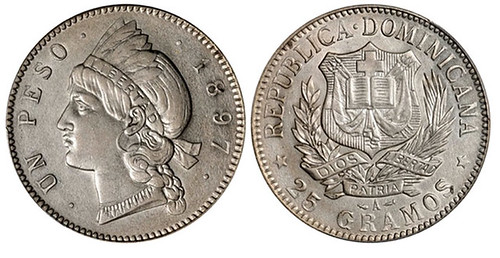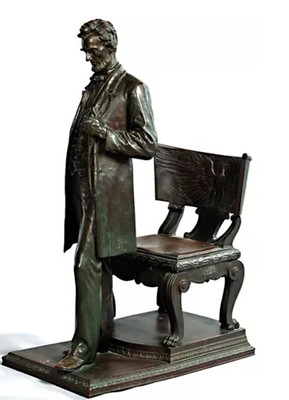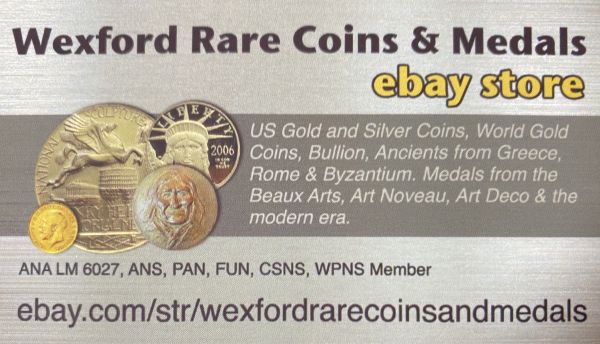
PREV ARTICLE
NEXT ARTICLE
FULL ISSUE
PREV FULL ISSUE
V25 2022 INDEX E-SYLUM ARCHIVE LOOSE CHANGE: FEBRUARY 20, 2022Here are some additional items in the media this week that may be of interest. -Editor A CoinWeek article by Tyler Rossi discusses foreign coins struck by the U.S. Mint. Here's an excerpt - see the complete article online. Some interesting numismatic tidbits here. -Editor The first-ever foreign coin struck by the U.S. was a Liberia One Cent coin in 1833. This series was intended to help fund the Back to Africa movement, which many prominent white Americans supported because they believed that emancipated slaves could never live alongside their freeborn counterparts. This coin was not included in the U.S. Mint's annual reports, probably because many people considered did not consider it a true coin but instead more of a hard times token or colonial script. n all, the Mint produced 11,193,348,346 foreign coins at six facilities–Philadelphia, Denver, San Francisco, New Orleans, West Point, and Manila–for 43 different nations: Argentina, Australia, Bahamas, Belgian Congo, Belgium, Bolivia, Brazil, Canada, China, Colombia, Costa Rica, Cuba, Curacao, Dominican Republic, Ecuador, Ethiopia, Fiji, France, French Indo-China, Greenland, Guatemala, Kingdom of Hawaii, Honduras, Israel, Liberia, Mexico, Nepal, Netherlands, Netherlands East Indies, Nicaragua, Panama, Peru, Philippines, Poland, El Salvador, Saudi Arabia, South Korea, Surinam, Syria, Taiwan, Thailand, and Venezuela.
While all designs, specifications, and compositions were dictated by the contracting government, the United States would usually engrave the dies. However, there are some cases where the customer would give the dies to the Mint or contract with a third-party company to manufacture the dies. For example, in 1897 the Dominican Republic contracted the Paris Mint to engrave its 1 Peso dies, which were subsequently sent to the Philadelphia Mint for use. These coins actually bear the Paris Mint Mark
Dominican Republic
To read the complete article, see:
Coins like the 1933 Double Eagle aren't the only big-ticket items produced by American sculptor Augustus Saint-Gaudens - one of his Lincoln bronzes sold for nearly a million dollars. -Editor
Skinner's bronze, which was cast before 1926, is one of a series of reductions cast from the original maquette made by Saint-Gaudens that were overseen by the sculptor's widow and begun in 1912. It is signed and inscribed COPYRIGHT 1912 BY A.H.SAINT-GAUDENS on the back edge of the base, and AVGVSTVS SAINT GAVDENS SCVLPTOR M.D.CCC.LXXXVII along the left edge, and inscribed E PLVRIBVS VNVM on the chair. It had a provenance to a Massachusetts educational institution, probably since the 1930s, possibly earlier. It made $950,000 (£698,530), just over the upper end of its $700,000-900,000 estimate, and was sold to the Colby College Museum of Art, in Maine where it will now go on public display in the Lunder Collection.
To read the complete article, see:
This article from The Telegram cites a study of how well people can detect counterfeit banknotes. -Editor New study shows that the brain is able to detect counterfeit money immediately, but it doesn't always act the information...
To read the complete article, see:
For those interested in U.S. colonial history, here's an interesting non-numismatic blog article I came across about the Stamp Act. -Editor
But Americans were seriously ticked off at having their loyalty called into question. Parliament was ticked off at the Americans' refusal to contribute to their defense. And things gradually slid downhill, until . . . Lord Cornwallis surrendered the American colonies to George Washington, to the theme tune of The World Turned Upside Down , played by the massed British Army bands (yes, that happened) after losing the Battle of Yorktown in 1781. British America hadn't really ended, of course: The colonies in the West Indies (enslaved people growing sugar) were far more profitable than the podunk operations on the mainland. But the mainland was now on its way to being what the Brits think America is for these days. She says cryptically. Here's the design for the never-were stamps for British America:
To read the complete article, see:
Wayne Homren, Editor The Numismatic Bibliomania Society is a non-profit organization promoting numismatic literature. See our web site at coinbooks.org. To submit items for publication in The E-Sylum, write to the Editor at this address: whomren@gmail.com To subscribe go to: https://my.binhost.com/lists/listinfo/esylum All Rights Reserved. NBS Home Page Contact the NBS webmaster 
|



